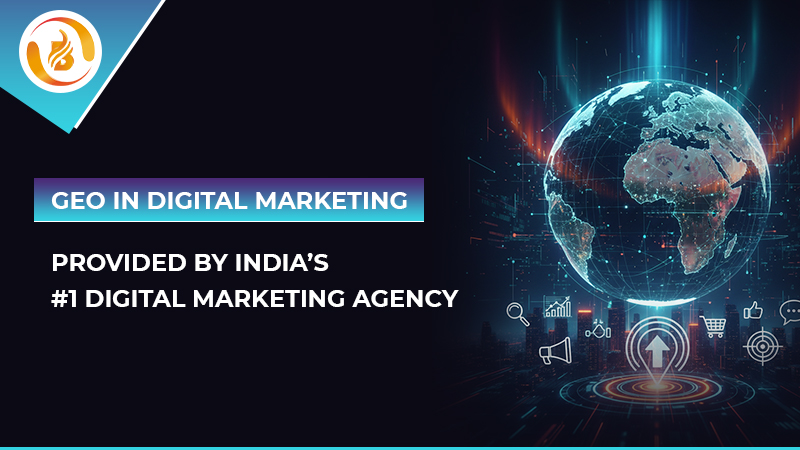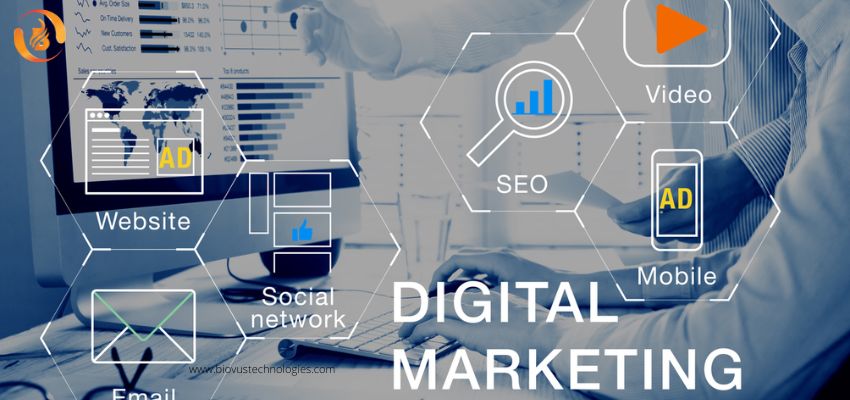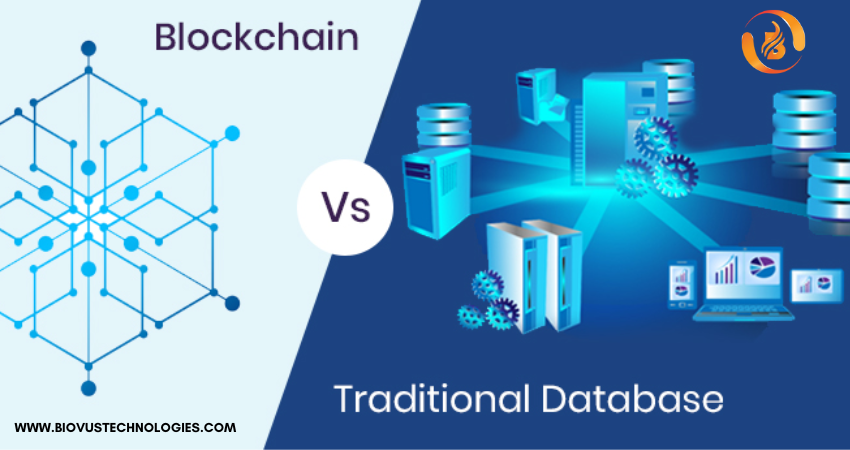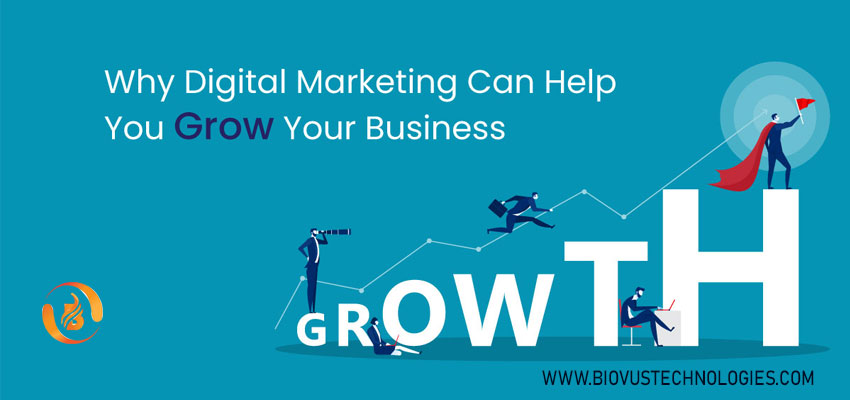In today’s fast-evolving digital era, GEO (Generative Engine Optimization) represents the next big step in online marketing. It focuses on refining content for AI-powered search engines and conversational platforms such as ChatGPT and Gemini. Unlike traditional SEO, which aims to rank higher on search results, GEO ensures content is credible, structured, and relevant enough to be referenced directly in AI-generated responses.
At the same time, GEO also stands for Geolocation Marketing, a location-based strategy that helps brands connect with audiences in real-world locations. In this blog, we’ll explore both interpretations of GEO, their primary use cases, key differences from traditional SEO, and how India’s leading digital marketing company – Biovus Technologies, leverages GEO strategies to deliver maximum results.
What Does GEO Mean in Digital Marketing?
In digital marketing, GEO can have two major meanings:
- Generative Engine Optimization (GEO) – The process of optimizing content for AI-based search engines and generative tools.
- Geolocation Marketing (GEO) – The use of physical location data such as country, city, ZIP code, or GPS coordinates to deliver personalized ads and campaigns.
Geolocation marketing — also known as location-based marketing — uses a user’s location data to deliver targeted ads, offers, and content, making each interaction more relevant and personalized.
Common examples include:
- Displaying location-specific ads on Google or social media.
- Sending push notifications when users are near a store.
- Offering region-based discounts and promotions.
- Customizing website content by region or language.
Ultimately, GEO bridges digital strategy and real-world engagement, helping businesses connect with customers more meaningfully.
The Power and Importance of GEO Data in Marketing
Location-based marketing has evolved from a trend to an essential part of modern digital strategy. Here’s why it matters:
- Personalized User Experience: Deliver content and offers based on location to improve relevance and engagement.
- Higher ROI on Ads: Focus ad spending on audiences most likely to convert.
- Competitive Advantage: Stay ahead by reaching customers at the right time and place.
- Increased Foot Traffic: Use location-based promotions to drive more visitors to physical stores.
- Enhanced Customer Insights: Analyze user location data to better understand motivations and behavior.
Key Benefits of Generative Engine Optimization (GEO)
GEO in digital marketing goes beyond location. It also involves optimizing for AI-driven visibility. Here are its key benefits:
- Improved Conversion Rates: Personalized experiences increase engagement and sales.
- Brand Authority & Credibility: Being cited in AI-generated answers builds trust and recognition.
- Expanded Reach: Helps brands connect with both local and global audiences effectively.
- Competitive Edge: Early adoption of AI-friendly optimization strategies ensures long-term advantage.
- Future-Proof SEO Strategy: Prepares your content for the AI-driven search landscape.
- Data-Driven Insights: Uses real-time data to refine and enhance campaign performance.
GEO vs. SEO: Understanding the Key Differences
| Feature | SEO | GEO |
| Keyword Strategy | Focuses on keyword density and placement. | Focuses on semantic relevance and natural language. |
| Optimization Target | Designed for human search behavior. | Designed for AI systems and generative platforms. |
| Content Structure | Uses meta tags, headers, and readability factors. | Uses AI-friendly formatting for better extraction and understanding. |
| Authority Building | Depends on backlinks and domain reputation. | Depends on factual accuracy and brand credibility for AI citations. |
| Performance Metrics | Tracks clicks, bounce rate, and dwell time. | Tracks how often AI systems cite or reference your content. |
Types of GEO Digital Marketing Strategies
GEO marketing includes a variety of techniques designed to target specific audiences:
- Geo-Fencing: Create virtual boundaries to trigger ads or messages when users enter or leave an area.
- Geo-Targeting: Deliver ads based on the user’s specific location.
- Geo-Conquesting: Attract customers away from competitors’ locations.
- Location-Based Social Ads: Run campaigns aimed at specific areas to increase engagement.
- Local SEO: Optimize visibility for nearby or “near me” searches.
Tools and Technologies Used in GEO Marketing
Marketers use powerful tools to execute location-based campaigns effectively, such as:
- Google My Business (GMB): Boosts local search visibility.
- Facebook & Instagram Geo-Targeting: Reach users based on radius, ZIP code, or city.
- Google Ads Location Targeting: Control where ads appear geographically.
- Programmatic Advertising: Automate ad delivery using real-time location data.
- Google Analytics: Gain insights into audience location and campaign performance.
How GEO Marketing Functions
Here’s how GEO-based campaigns work in practice:
- Data Collection: Uses GPS, Wi-Fi, or IP data to identify user locations.
- Ad Delivery: Displays ads or messages in real time to users within target zones.
- Segmentation & Analysis: Tracks engagement and conversions to refine campaigns.
- Personalization: Customizes content, offers, and experiences based on user proximity and behavior.
Challenges in GEO Digital Marketing
While powerful, GEO marketing does face some challenges:
- Privacy Concerns: Must comply with regulations like GDPR and CCPA.
- Data Accuracy: GPS and IP data aren’t always precise.
- Over-Personalization: Excessive targeting may feel intrusive.
- Technical Integration: Implementing advanced tools requires proper setup and maintenance.
The Future of GEO in Digital Marketing
The next phase of GEO will merge AI, predictive analytics, and hyperlocal targeting, offering deeper personalization and engagement.
Future trends include:
- Predictive GEO Analytics: AI predicting user movements and preferences.
- Hyperlocal Targeting: Ads customized down to specific streets or buildings.
- Augmented Reality (AR) Campaigns: Location-triggered immersive experiences.
- Voice Search Optimization: Increased focus on “near me” voice queries.
Conclusion
GEO in digital marketing is more than a targeting method, it’s a bridge between the digital and real world. It empowers brands to create personalized experiences, strengthen customer relationships, and boost ROI.
Whether you’re a small business or a global enterprise, integrating GEO strategies can completely transform how you connect with audiences. By applying location data and AI-driven insights ethically and strategically, you can place your brand exactly where your customers are, both online and offline.
At Biovus Technologies, we specialize in advanced GEO marketing and AI-driven SEO strategies that help businesses dominate the digital space.
Recognized as the #1 Digital Marketing Agency in Tamil Nadu, Biovus delivers innovative, data-driven solutions tailored to every brand’s growth journey.
Partner with Biovus Technologies today and experience the future of digital marketing powered by precision, creativity, and technology.
FAQ
1. What is GEO in digital marketing and how does it work?
GEO uses location data and AI optimization techniques to deliver relevant ads and content, helping brands connect with the right audience at the right time and place.
2. What is GEO used for?
GEO (Generative Engine Optimization) helps content appear in AI-driven search results, while Geolocation GEO delivers personalized ads based on location.
3. What does GEO stand for?
“GEO” can stand for Generative Engine Optimization or Geolocation Marketing, depending on the context.
4. What is geo-targeting?
Geo-targeting delivers digital ads or content to users based on their physical location.
5. Why is geo-targeting important?
It increases ad relevance, improves user engagement, and boosts both online and in-store traffic.
6. What is geo-targeting in SEO?
It’s the practice of optimizing your website for users in a specific area to rank higher in local searches.
7. Can you geographically target Facebook ads?
Yes. Facebook’s location targeting lets you reach audiences by country, state, region, or city.
8. Why choose Biovus Technologies for GEO marketing?
Because Biovus Technologies is Tamil Nadu’s #1 Digital Marketing Agency, known for its expertise in GEO optimization, AI-based marketing, and SEO-driven brand growth. Our strategies are designed to boost visibility, engagement, and long-term business success.







